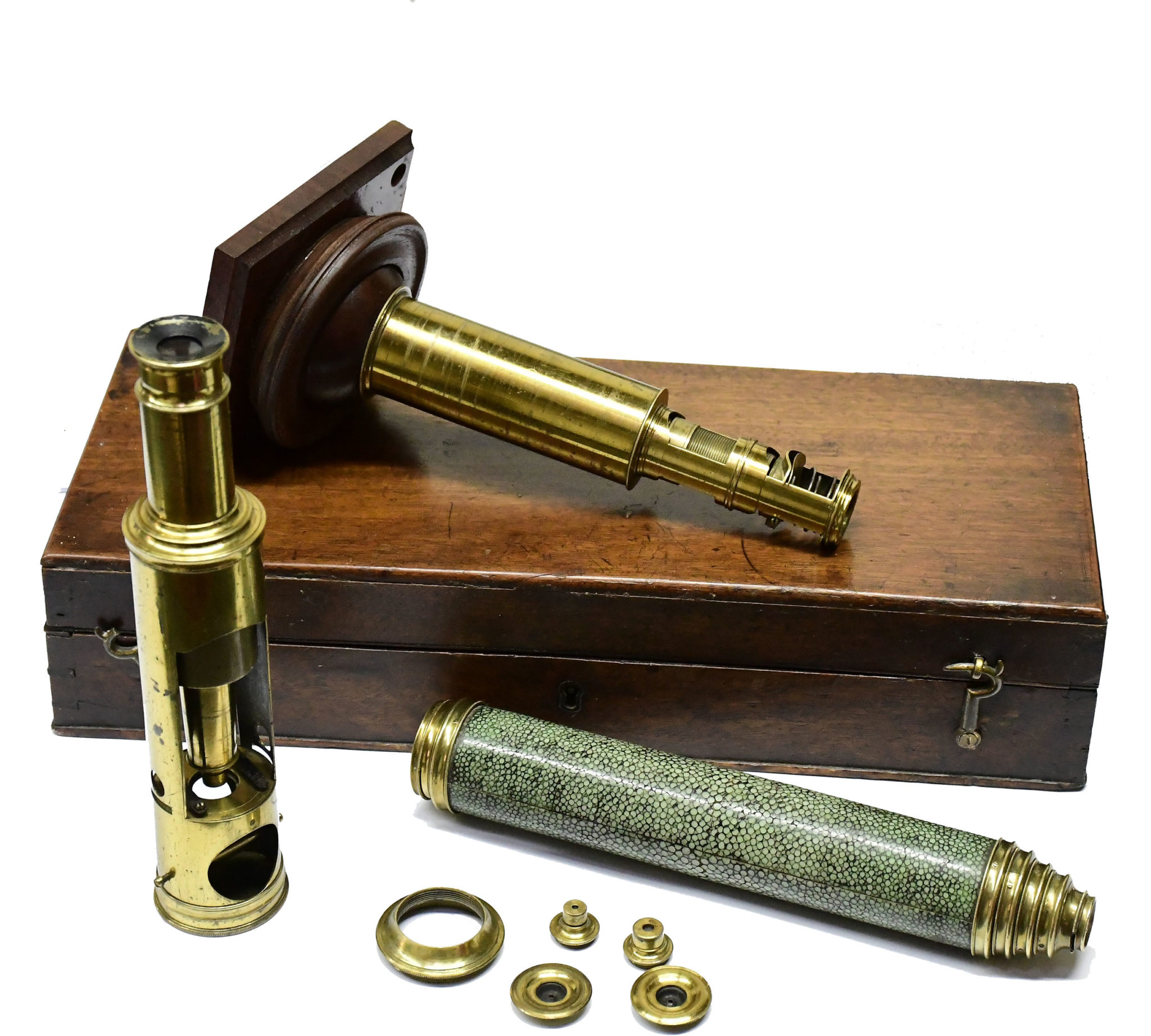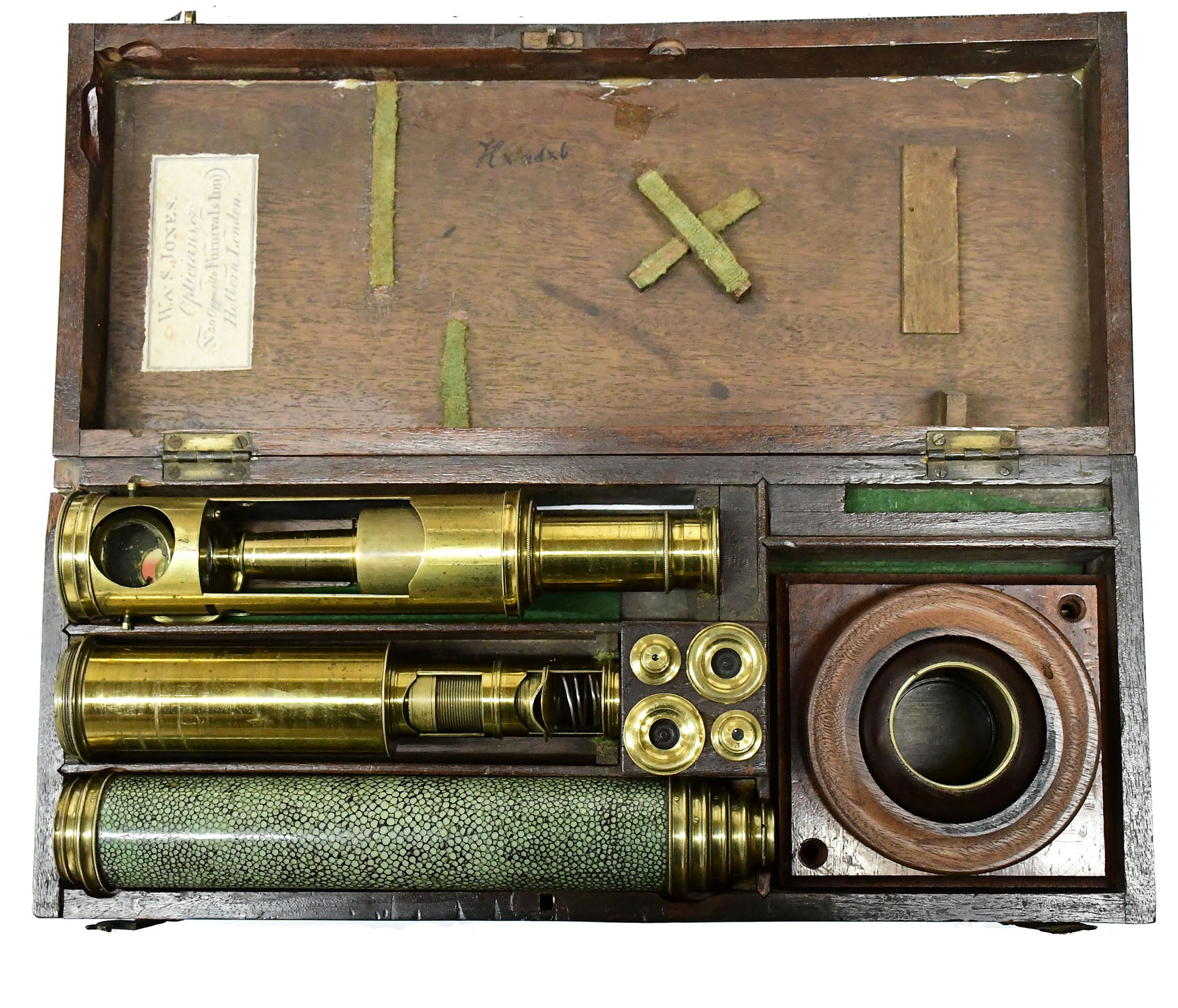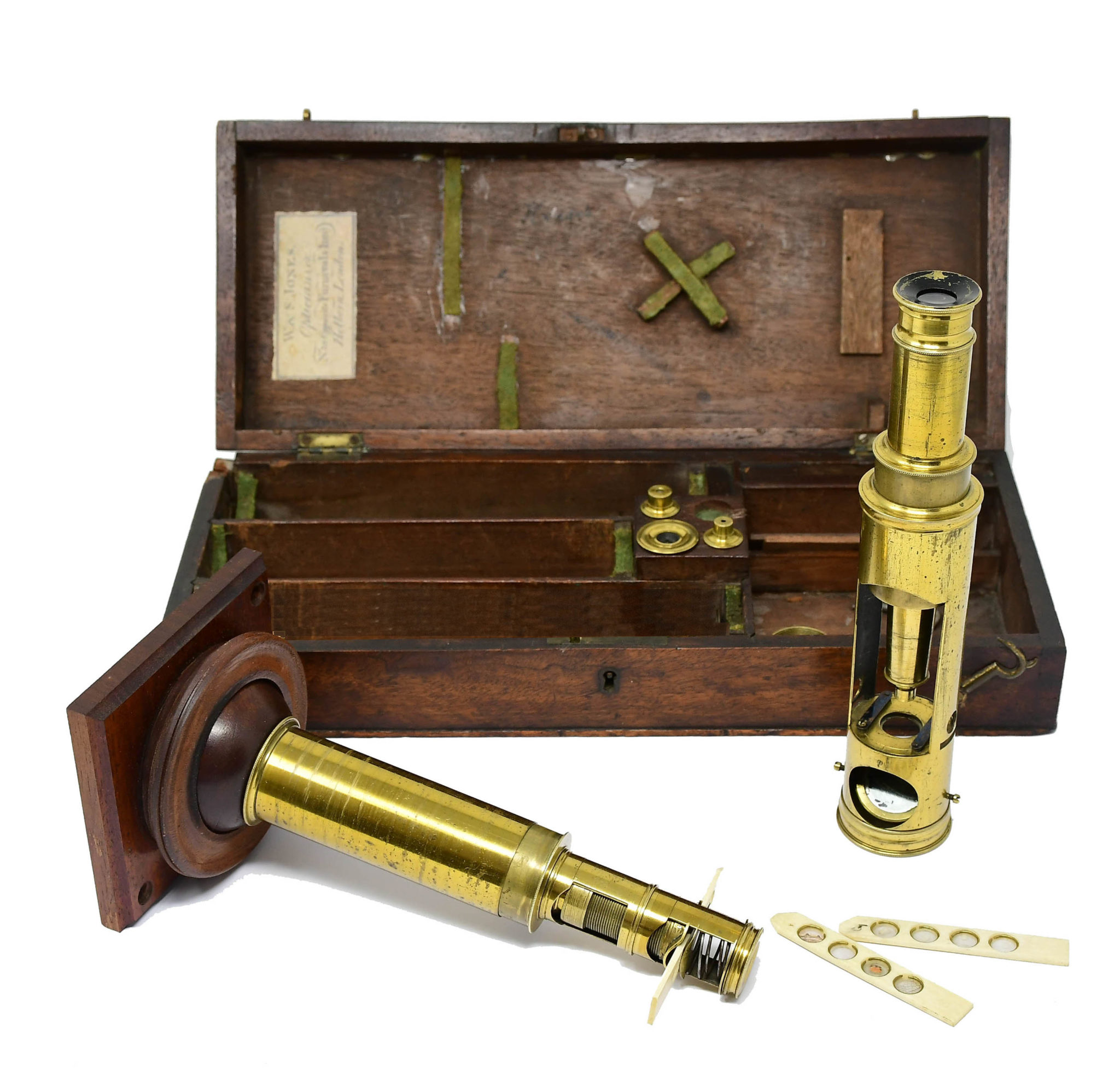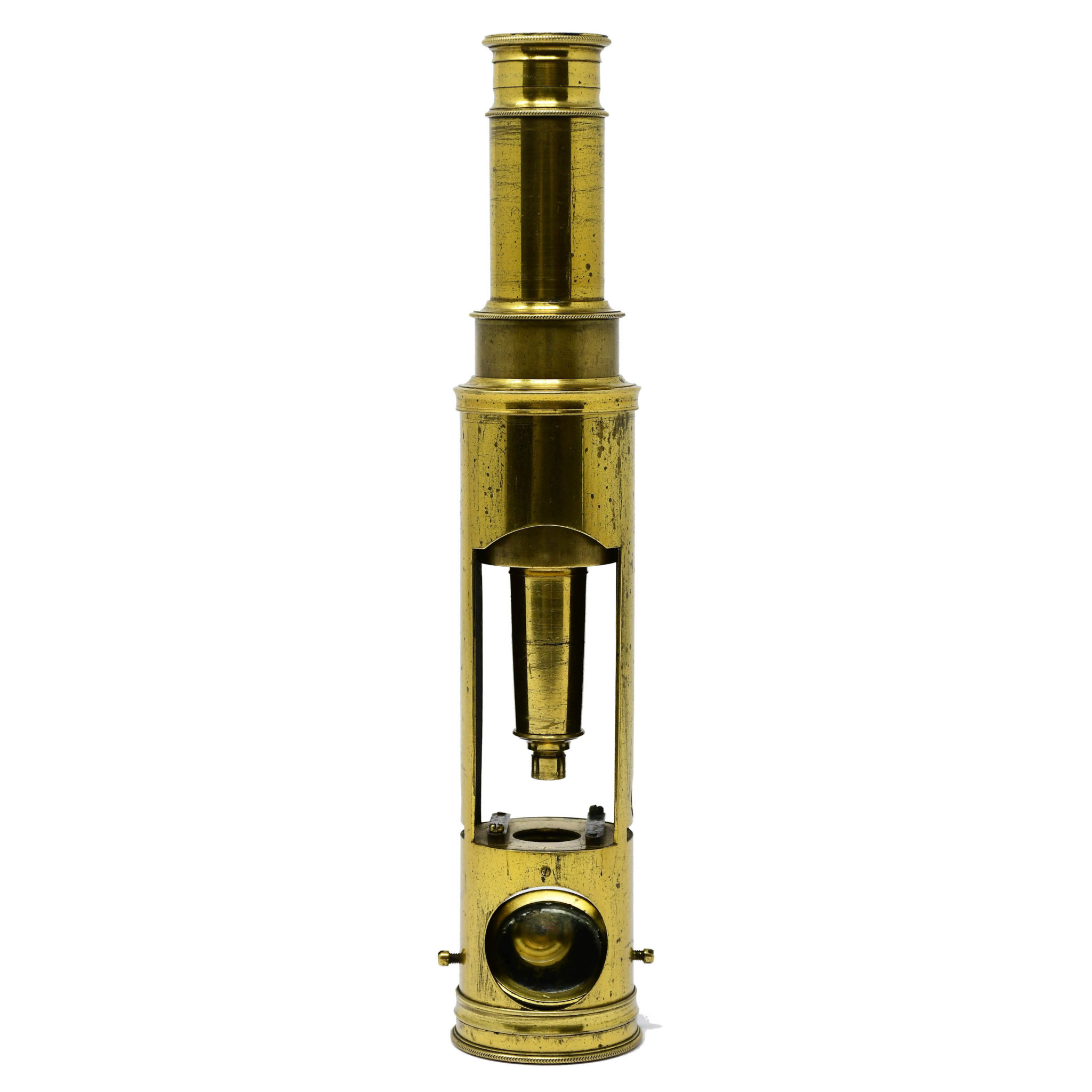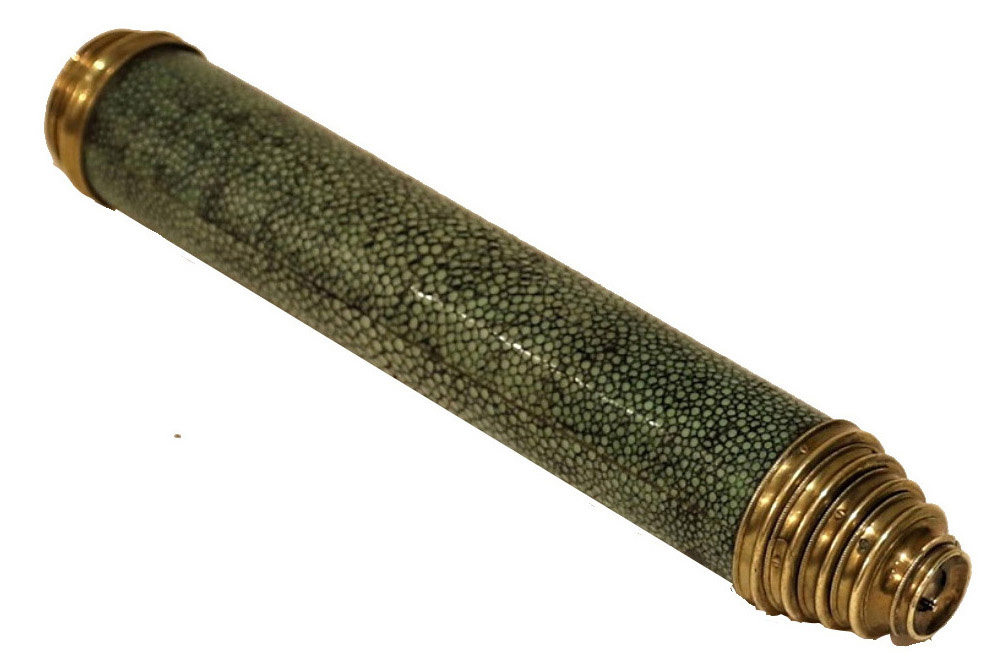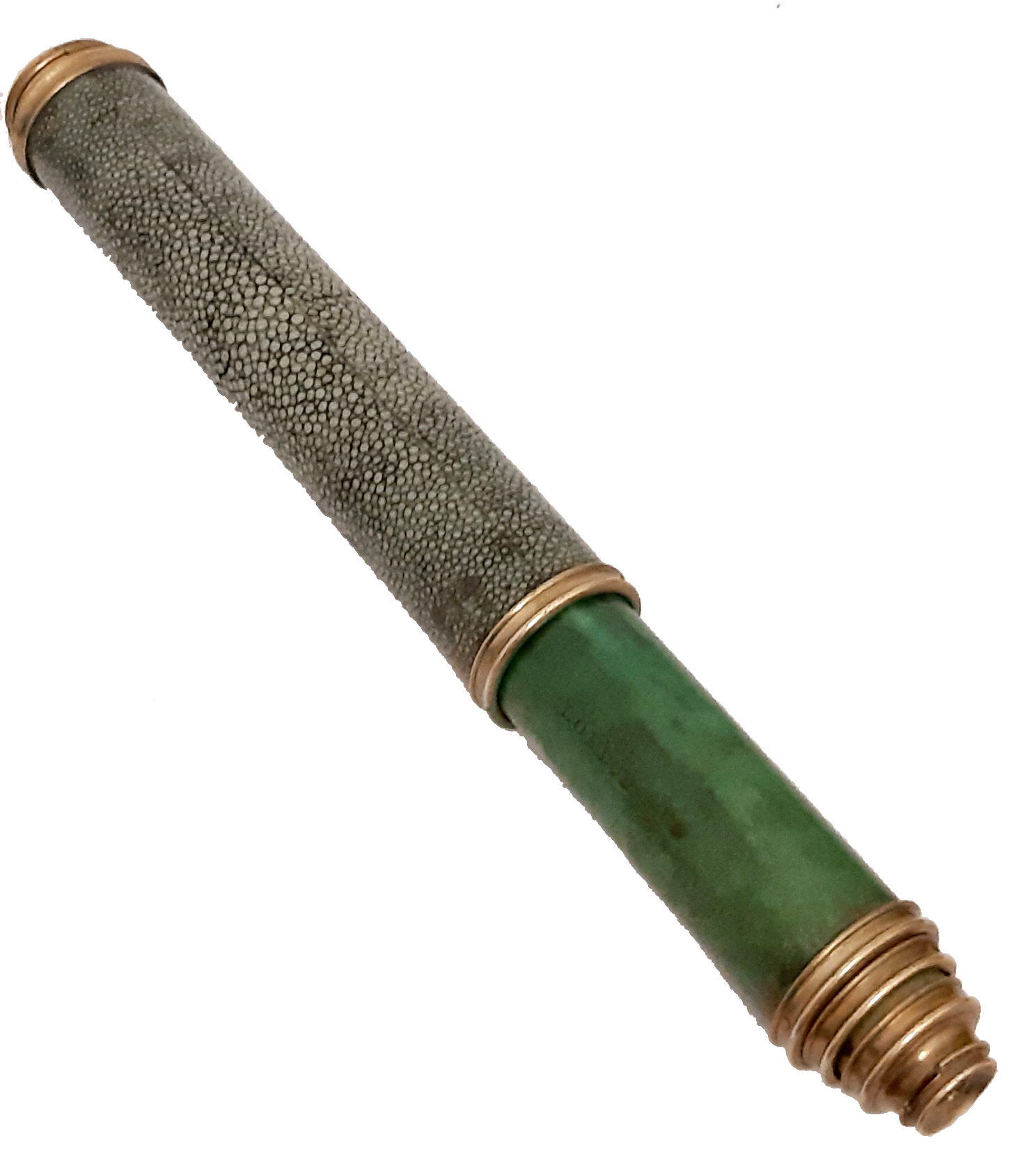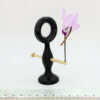Optical Cabinet by Benjamin Martin (Retailed by Jones), Ca. 1770-1780
Stock Number: FG_22043
Sold
The mahogany case contains optical instruments. These include a "scioptic ball" solar projector, a screw-barrel slide carrier having two projection lenses that can function as a handheld microscope. Also, a brass drum microscope with three objectives and a telescope by Dollond. The telescope has an outer tube covered in green shagreen and three inner tubes covered with green vellum. The first inner tube is signed by the maker. The accessories with these instruments are two shutter screws, a brass dish with a glass bottom, and five bone sliders.
Circa
1770-1780
Country of manufacture
UK and Ireland
Description
For a concise description of Martin’s later pocket microscopes and his optical cabinets, including this one, please refer to my collection’s page: https://www.microscopehistory.com/martin-signed-dollond The parallels to the 18th-century drum microscope are all related to Benjamin Martin, though most are unsigned. Most of the parallels to this microscope are found in the optical compendia made and advertised by Martin from about 1750 as a Cabinet of Optical Instruments. There, this microscope accompanies scioptic balls and telescopes. Therefore, while the telescope is signed ‘Dollond London’, ascribing it to John Dollond (1706-1761) or his son Peter, it should be related to Martin. No record shows that Dollond had ever produced any drum microscope before the end of the 18th century. Moreover, in the Science Museum London (SML) collection, there is a Universal microscope, undoubtedly made by Martin but signed “P et J Dollond Londres”, perhaps an instrument intended for export to France. Dollond is definitely known to have put his name on instruments recognizably made by other makers. Because the microscope has an “in-between” field lens after the Ramsden ocular, it is undoubtedly a later product by Martin than his ‘Pocket Microscope’. The estimated date of ca. 1770-80 and the manufacture by Martin are evident. The optical cabinet bears a paper card glued to the inner side of the case cover with the name W&S Jones. But for the reasons explained in the above website, the Jones brothers were merely the retailers. Condition: The overall condition of the entire compendium is very good. The following issues are noted: 1. The retaining ring of the scioptic ball is threaded on the mating side and stuck. It is too fragile to remove, and I wouldn’t recommend using force on it. 2. One of the two hooks locking the case is partly broken. However, the lock still has its original key.
Ask the Dealer
Dealer information
 Gilgamesh
Gilgamesh
Gilgamesh was the mythological hero of the cultures of ancient West Asia, who set out on a journey in which he sought youth and eternal life.
Fleaglass Gilgamesh is located in Israel. As an archaeologist researching the material culture of the distant past and using the microscope as a powerful research tool, I have collected microscopes for over two decades from this fantastic tool's first 300 years of existence and researched the cultural context of their use. Passion has become an obsession, and I cultivate the complete and almost unique West Asian collection of historical microscopes. Respectively, I put up surplus or exciting items from the collection for sale. I would be happy to advise any interested collector free of charge. I would love to send photos, information and bibliographic references and discuss the sale details of the items offered here for sale.




